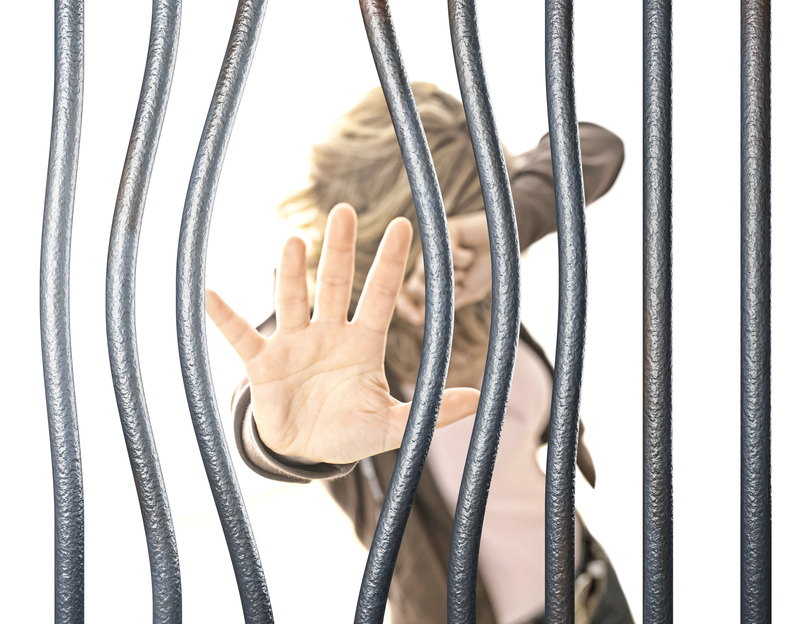

Members of Mr. Ward’s family
In Ireland, today, the court heard about a 15-year-old boy who was “institutionalized” in the Ballydowd Special Care Unit. Special Care. A Special Care Unit is a place in which the State can imprison children who are “troubled.” For their own welfare and safety. Ireland has three such units: Ballydowd, Coovagh House, and Gleann Alainn.
The court today heard that the boy has been diagnosed as living with Attention Deficit Hyperactivity Disorder. He has trouble with `regular’ classrooms. He spent much of his time at Ballydowd “detained for long periods of time by himself.” How the State care for `troubled’ children? Isolation. And now, according to the boy’s parents, attorneys and psychologists, he is “unfit for mainstream education”.
Two years ago, on August 31, 2009, the Health Information and Quality Authority, HIQA, issued a report stating unequivocally that Ballydowd must be closed. That report was a follow-up to a November 2008 report in which Ballydowd was deemed “no longer fit for purposes.” From practices to material conditions, the place was a disaster, and a danger to children.
The government pledged to close Ballydowd, and move the children to a nearby facility. In 2010, Ballydowd had twelve beds. In the most recent HIQA inspection, on October 27, 2010, Ballydowd housed seven children, four boys, three girls, all between 13 and 16 years old. And now, the Republic of Ireland claims it cannot find decent and adequate places for seven children who may or may not require “special care”.
In Australia, the State’s special care often proves fatal, especially for Black residents.
Consider the story of Mr. Ward, an Aboriginal elder. In January 2008, Mr. Ward, 46 years old, was taken on a 220 mile ride across the blistering Central Desert to face a drunk driving charge. Mr. Ward was a respected Aboriginal. He had represented the Ngaanyatjarra lands across Australia as well as at international fora. The two people who drove Mr. Ward worked for a subsidiary of G4S. They did not see an Aboriginal elder nor a statesman. They saw “a man in his 40’s, 50’s, Aboriginal with a dark skin. He was dirty.”
They threw Mr. Ward into the back of a Mazda van, into the security “pod” with metal seating and no air conditioning. All male remand prisoners are considered dangerous, or “high risk”. The fact that Mr. Ward was known to be cooperative and congenial was irrelevant. For his own safety and welfare, he had to go in the back. The trip took almost four hours. The temperatures that day were 40 degrees Celsius, 104 degrees Fahrenheit. Mr. Ward died of heatstroke. He died with third degrees, presumably from where he touched the metal floor of the van. Mr. Ward cooked to death, slowly and in excruciating pain.
There was no possibility for Mr. Ward to survive that trip. There was no working panic button. There was no means of communication between the security section and the drivers in the cabin. He had one small bottle of water. He was destined to the death he suffered. It is Australia’s form of special care. It must be, because Australia pays a hefty price, literally, for the G4S services.
Again, every aspect of this story had been publicly described in earlier studies. In a 2001 government study, identical Mazda `pods’ were described as “not fit for humans to be transported in.” They were seen as “a death waiting to happen.”
In the intervening decade, there have been other major reports, two in 2005, in 2006. To no avail. In 2008, Mr. Ward was dumped into the oven of the back of that Mazda. In 2009, G4S was awarded the contract for prisoner transport.
When asked about the implications of Mr. Ward’s story, Keith Hamburger, the principal author of the 2005 report, responded, “That’s a matter of great concern because this is not rocket science, we’re dealing here with duty of care.”
Duty of care.
Duty of care is a legal concept that ensures that people should not cause one another unreasonable harm or loss. But what is “unreasonable”? Ballydowd is still open and consuming children. G4S continues to ferry prisoners across the desert. Why? Because they have been deemed not “unreasonable”. Where is justice in that measure of reasonable and unreasonable suffering?
(Photo Credit: PerthNow.com.au)
